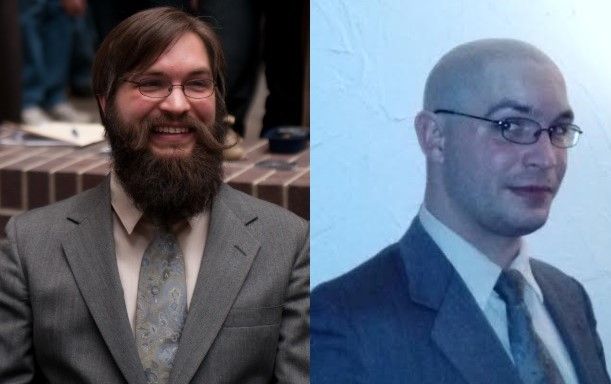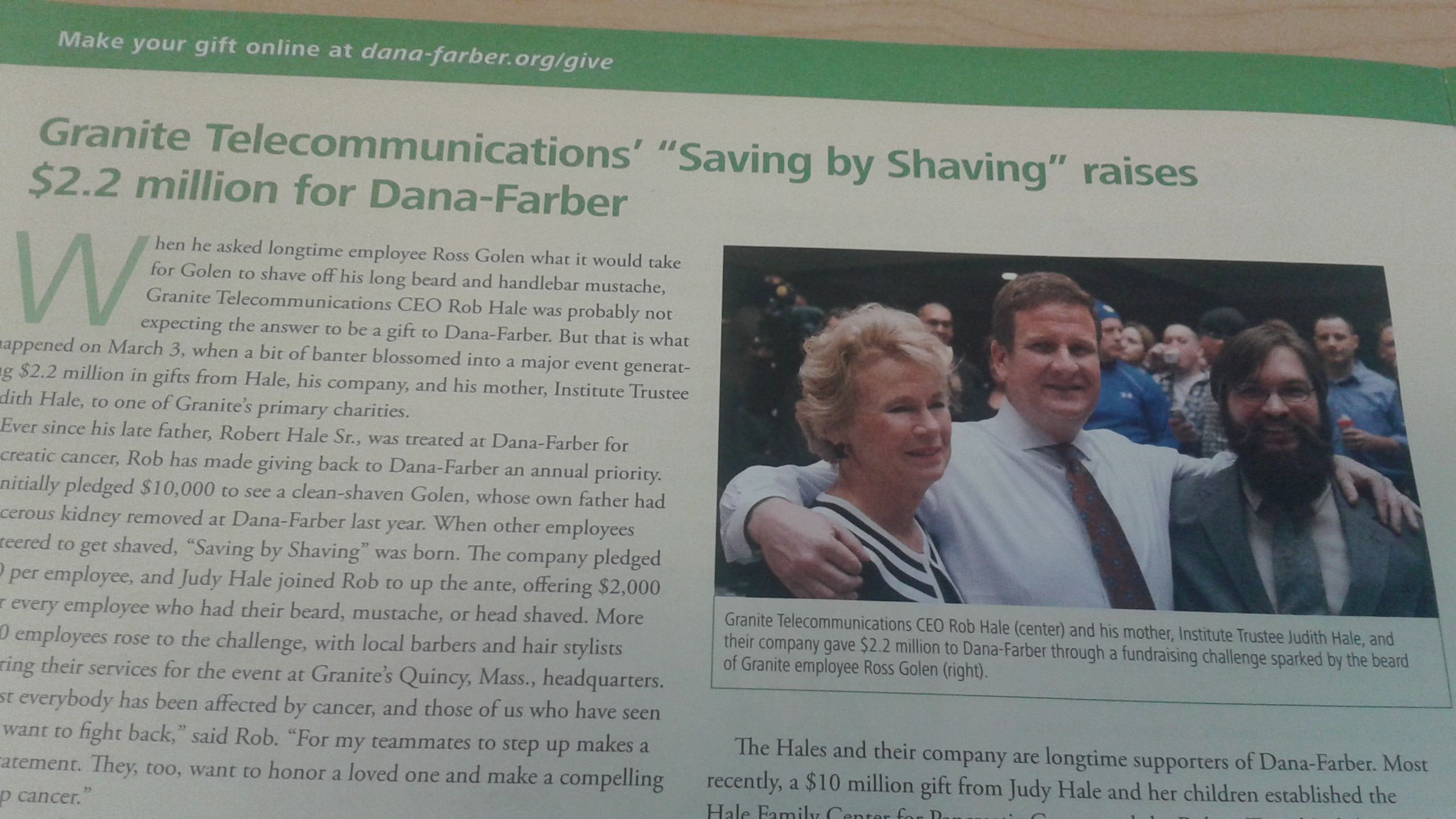Circuit Connections—Meet Ross
Here at Circuit Clinical, our team has experience across a broad span of multiple therapeutic areas. We believe in sharing this knowledge, experience, and their stories—they are incredibly important and valued as part of our company and culture.
Today, we're interviewing Ross Golen, Director of Business Development, as part of our ongoing campaign: Circuit Connections.
--
1. When did you begin working in clinical research and expand to where you're today?
My clinical trial journey started in early 2015 as a Business Development Coordinator for BlueTheory Clinical Trials/BTC Network (now ClinEdge/Elligo) in Boston, procuring clinical trial opportunities for our site network. Over time, my responsibilities evolved into expanding our site network therapeutically and geographically as the Associate Director of Site Strategy. After four years, I moved on to a more niche, tech-oriented role in the respiratory medical diagnostic device, software, and quality data space within clinical trials for a great, family-owned UK company called Vitalograph. On one fateful Wednesday evening, my friend Dr. Irfan Khan, our CEO at Circuit Clinical, contacted me asking if I would consider working for him. He and I did business together in 2018 and frequently spent time at conferences; as a result, I became a fan of Circuit Clinical, passively observing the evolution and inspiring press releases out of the corner of my eye via LinkedIn. I accepted his offer, and one year later, here I am.
2. What made you want to work in clinical research (and/or healthcare)?
After graduating college and before my “second life” in clinical research, I worked for eight years in the B2B telecom space for Granite Telecommunications. Every Monday morning, our CEO would run a meeting with all 1,200+ employees, physically or remotely present. The team used a portion of this meeting to announce promotions and keep things interesting; our CEO would read off an intriguing fact submitted by the promoted employee.
Occasionally, our CEO would challenge the person with an interesting fact to come up in front of the whole company to prove it as the “opening act” for the following Monday’s meeting. My interesting fact was that I had six music recordings played on local radio, which was obvious bait for “the challenge”. The following Monday, I showed up with my guitar and played an instrumental version of one of my songs, best described as an ethereal, snake-charmer-sounding tune.
From there, things got interesting. For some quick context, at this point a decade ago, having a big beard was uncommon and considered by some to be uncouth, unlike today. Knowing the CEO’s years-long distaste for my fuzzy face, he asked me what it would take to shave my beard. The only thing I could do was laugh. He offered up Boston Celtics tickets, which I considered a lowball offer, as he is a partial owner of the Celtics. I laughed again and respectfully declined. Then things went sideways–in a good way. After several rounds of heated, aggressive negotiation in front of the entire company, who had no idea to make of what they were witnessing, I settled on the offer of shaving my beard in exchange for him to donate $10,000 to Dana Farber Cancer Research. For seventy-five years, Dana Farber Cancer Research has led by making life-changing breakthroughs in cancer research and patient care, providing the most advanced treatments available in the Boston area.

My beard-shaving offer was only the beginning. The plot thickened when my brave colleague Mitch Adams, whose father had recently succumbed to pancreatic cancer, just as our CEO’s father had years before, reached out to our CEO asking if he could shave his head for a contribution as he did not have a beard and the cause meant so much to him. That struck a chord in our CEO’s heartstrings, which resulted in an offer to anyone at the company to shave their head for a $1,000 contribution to Dana Farber. As the savvy businessman he is, he offered a multiplier of the donation if we could reach certain milestones for the number of people to join this endeavor. Within a week, things snowballed drastically. The number of men and women who offered to shave their heads went up to 428 brave souls, with the amount per head raised to $5,000.

The media caught wind of this act of solidarity and attended our event that raised over $2 million for cancer research, calling it “Saving by Shaving.” Since that day, this event has become a tradition for the last ten years, raising more and more each year and attracting prominent local Boston celebrities such as beloved Massachusetts Governor Charlie Baker, the singer of Dropkick Murphy’s, “Big Papi” David Ortiz, and even the NFL’s golden boy and GOAT: Tom Brady.
You may be wondering how this relates to how I embarked on my clinical trial journey. Full transparency: I would never have considered clinical research as a potential career for me because I’m not a scientist, I knew nothing about medicine, and I didn’t realize that someone like me could be part of this impactful and life-saving industry as my undergraduate degree was in communications.
However, by luck one day, while wondering what I should be doing with my life, I stumbled upon a job ad for BlueTheory Clinical Trials, which to my surprise, looked precisely like my CV; if one were to swap the terms “clinical research” with “telecommunications.” Without the “Saving by Shaving” experience, I would not have felt the pull or possessed the blind confidence required to make such a stretch to apply for this job. To my delight and good fortune, it turned out that clinical research has a place for businesspeople! Who would have thought? To not taint the fantastic events that occurred the year prior, I did not mention the “Saving by Shaving” experience in any of my interviews, and I still got the job!
Looking back on this experience, it is clear to me the ripples in the waters of life, born of a bold yet unintended splash, had such lasting effects on my life and career trajectory. It still amazes me to this day. There was also an element of foreshadowing in this experience. For four years, I have become a co-caretaker of two elderly family members with late-stage cancer who live with my partner. We do our best for them.
Some people say everything happens for a reason, though I give a whole-hearted thumbs up as a skeptic.
To read more about the very first Saving by Shaving event, click on these links:
https://www.patriotledger.com/story/special/2014/03/03/at-quincy-s-granite-telecom/38514984007/
3. What is an example of a story/article that inspires you about doing clinical research?
Over the years, my involvement, understanding, and experience with the clinical trial world evolved into different aspects and points of view. First, it was the fun and camaraderie of the fundraising aspect from afar. It was getting involved with the nuts and bolts of the clinical trial process as I entered the industry professionally. Then, once my partner of fourteen years, Valerie, and I took over and cared for her parents, I started to understand the patient experience.
Four years ago, there was a time when Valerie’s mother Vera, who suffers from Squamous Cell Carcinoma, and her father Bob, who suffers from Waldenstrom’s Lymphoma due to exposure to Agent Orange in the Vietnam War, were simultaneously undergoing treatment. While it was not either of their first rodeos with battling recurring cancer, it was clear that they needed more help this time.
Shortly after that, we took things a step further when things got worse and moved them into our home to ensure that we would be there in case of any emergencies, of which there have been many hospitalizations over the last four years. That is when Valerie stepped in as the role of caretaker, requesting a Family Leave of Absence (FMLA) from her job as a Contract Administrator at Dunkin Brands Corporate. She brought her parents to their many appointments at Boston’s top medical centers, driving at least two hours round-trip several days per week to pick them up and drop them off. When her FMLA time ran out, we decided she would quit her job to focus full-time on her parents’ care.
Valerie took care of most of the heavy lifting with bringing her parents multiple times per week through the infamous Boston traffic to their appointments, waiting patiently through hours upon hours of lengthy infusions, administering their medication, emptying ostomy bags, and putting her mother to bed each night, in a tender role reversal. I did the easy parts of taking on the brunt of the housework and cooking, providing emotional support, and paying the bills; as Valerie decided to pursue nursing school so that she could learn to better care for her parents and move into a career with a more flexible work schedule that would allow her to continue bringing her parents to their appointments. After two years, Valerie earned her RN. She began work as an official nurse, which taught her to effectively navigate and fight through the surprisingly messy and complicated healthcare system for her parents.
Part of Vera’s care regimen for the past few years has been a clinical trial, which is why this story hits so close to home, and maybe why she is still alive after living through end-stage cancer for years. When looking at a clinical trial protocol and thinking about the process, you’ve got visit schedules, inclusion & exclusion criteria, dose ranges, PKs, imaging, long-term follow-ups, source documents, ECFs, blinded patient numbers, etc., but behind all of that are real people who are trying their hardest to push through a likely terminal condition, supported by their caretakers and doctors.
After this experience, when looking at a visit schedule in a clinical trial protocol, it has become more than visit 1, visit 2, visit 3, etc.; it is getting your ill family member out of bed when they don’t have the energy to do so, carefully helping them down the front steps, pushing them in their wheelchair to the car, doing some lifting to get them into the vehicle, wading through unending traffic, the reverse of the last few steps to get them into the hospital, holding their hand in the waiting room, spending hours to wait through the numerous assessments and infusions, processing difficult news from the physician, dealing with medication changes, and then 6 hours later, walking your completely exhausted loved one up the stairs and into bed, all for the roll of the dice that the experimental treatment will work. They will continue to live another day.
Take a few seconds to think about how epic the involvement of the clinical trial participant is in an instance like this. Think about how they and their caretakers must push themselves to do their part in developing potentially life-saving treatments for those who they likely will never meet suffering from the same disease when instead they could have just stayed in bed.
This reason is why clinical trial participants, and their caretakers, are heroes.